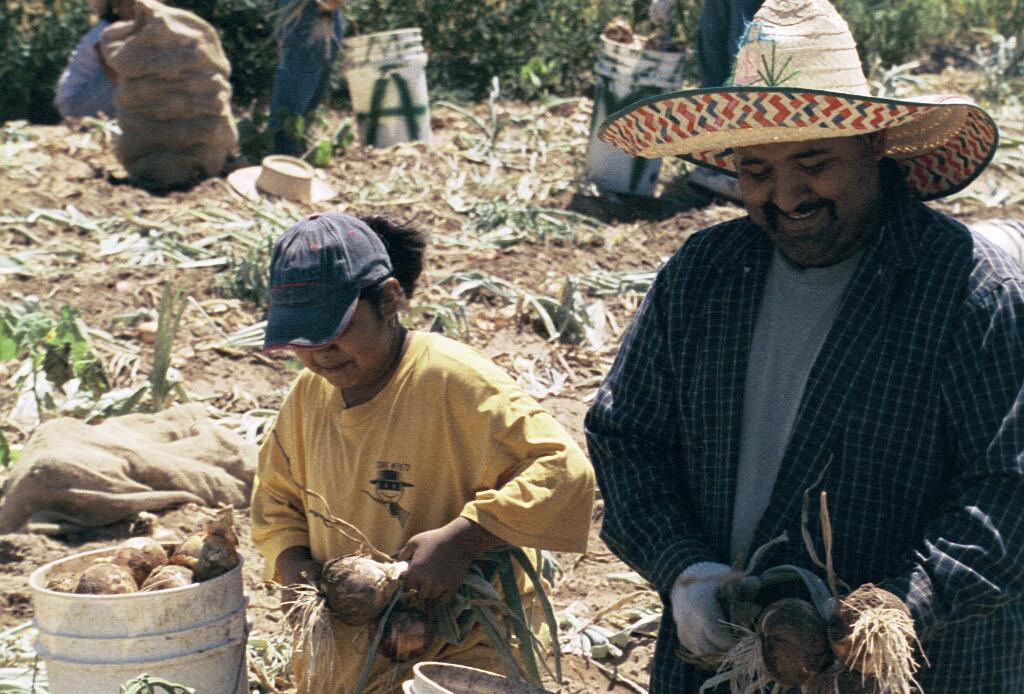America’s Agricultural Child Labor Laws Developed Because of America’s History with Race Many histories of child labor in the United States center the labor movement in the industrial North, while often ignoring America’s history of exploitating people of color in the agricultural industry. Before and after the Thirteenth Amendment’s abolishment of slavery on paper, Black children were enslaved, auctioned away from the arms of their parents,7 and functionally re-enslaved in the Jim Crow era through apprenticeship agreements, giving their free labor in return for “training.”8 Even where schools for Black children existed, sharecropping families often could not afford to send them because their labor was needed to meet the demands of land-owners.9 The response to child labor and the racial divide therein exposed that for many people, 7 DeNeen L. Brown, “‘Barbaric’: America’s cruel history of separating children from their parents,” The Washington Post, May 31, 2018, https://www.washingtonpost.com/ news/retropolis/wp/2018/05/31/barbaric-americas-cruel-history-of-separating-children-from-their-parents/ 8 Michael Schuman, “History of child labor in the United States—part 1: little children working,” U.S. Bureau of Labor Statistics, January 2017, https://www.bls.gov/opub/ mlr/2017/article/history-of-child-labor-in-the-united-statespart-1.htm 9 Russell Brooker, “The Education Of Black Children In The Jim Crow South,” America’s Black Holocaust Museum, accessed September 21, 2021, https://www.abhmuseum.org/ education-for-blacks-in-the-jim-crow-south/
8
the question was not whether children should be exploited, but only which children were exploitable. The news that southern textile mills employed child labor, though mainly white children, was sensationalized in the North as racialized “white child slavery.”10 When the Fair Labor Standards Act (FLSA) of 1938 was enacted, it prohibited child labor in factories but exempted the agricultural industry from child protections, ending the “white child slavery” in factories but allowing similar conditions to continue for children of color in the fields.11 Shortly thereafter, in 1942, the United States created the Bracero Program, a temporary guestworker program, officially for Mexican men. The goal was to provide cheap farm labor, while deterring undocumented immigration and the permanent settlement of Mexicans within the United States. Women and children were officially excluded from the program, because it was thought they would encourage permanent settlement.12 Nevertheless, families were regularly present in Bracero camps, working in the fields with husbands and fathers.13 Thus a new community of color 10 Betsy Wood, “Abolishing child labor took the specter of ‘white slavery’ and the job market’s near collapse during the Great Depression,” The Conversation, August 27, 2020, https://theconversation.com/abolishing-child-labor-took-thespecter-of-white-slavery-and-the-job-markets-near-collapseduring-the-great-depression-144454 11
The Fair Labor Standards Act of 1938, 29 U.S.C. § 203
12 Ana Elizabeth Rosas, “Breaking the Silence: Mexican Children and Women’s Confrontation of Bracero Family Separation,” Gender & History 23 No.2 (August 2011), 38. 13 Rachel DeLaCruz, “Bracero Families: Mexican Women and Children in the United States 1942-1964,” MA diss., (Old Dominion University, 2014), 47-71 https://www.academia.edu/8752462/BRACERO_FAMILIES_MEXICAN_WOMEN_AND_CHILDREN_IN_THE_UNITED_STATES_1942_64
Child Farmworkers








